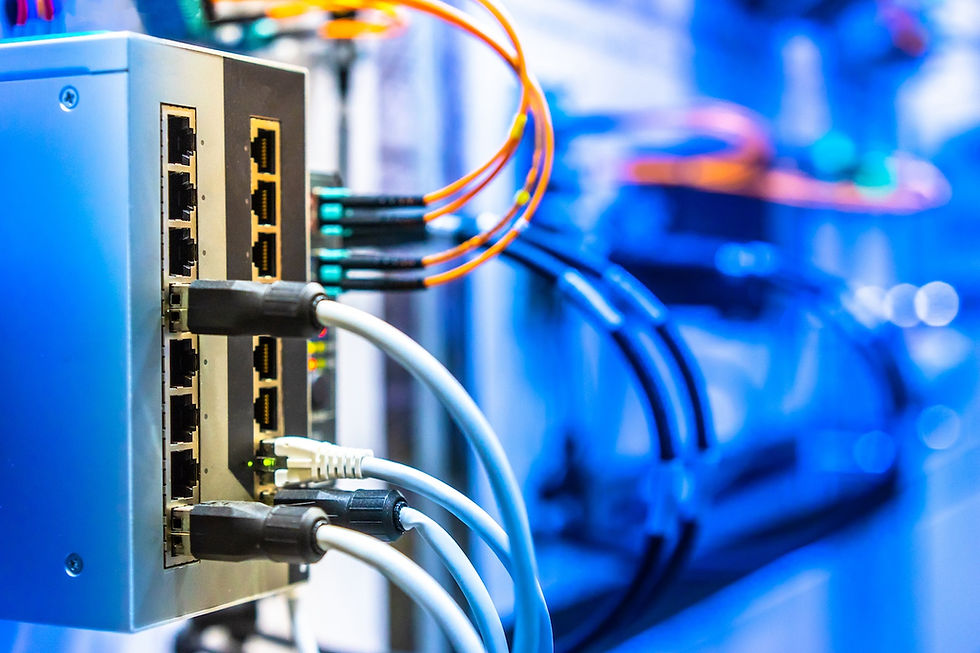The Evolution of Telecommunications in 2024
- ClarkTel
- Jun 20, 2024
- 3 min read
Updated: Jun 27, 2024
Telecommunications is a rapidly evolving field, and 2024 is no exception. With continuous advancements in technology, the way we communicate is undergoing significant transformations. From 5G expansion to AI integration, let's explore how telecommunications is evolving this year and what it means for individuals and businesses alike.

1. The Continued Expansion of 5G Networks
5G technology, which started rolling out a few years ago, has seen substantial growth in 2024. This fifth-generation mobile network offers unprecedented speed and connectivity, enabling a wide range of applications:
Enhanced Mobile Broadband
5G provides faster internet speeds and lower latency, making activities like streaming high-definition video, online gaming, and video conferencing smoother and more reliable.
Internet of Things (IoT)
The proliferation of 5G supports the growth of IoT devices. From smart homes to connected healthcare, 5G allows for the seamless integration of multiple devices, enhancing efficiency and convenience.
Smart Cities
5G is a backbone for smart city initiatives, enabling real-time data collection and management for traffic control, public safety, and environmental monitoring.
2. AI and Machine Learning Integration
Artificial Intelligence (AI) and Machine Learning (ML) are revolutionizing telecommunications by optimizing network performance and enhancing customer experience:
Network Optimization
AI-driven algorithms are used to predict and manage network traffic, reducing congestion and improving service reliability.
Customer Service
AI-powered chatbots and virtual assistants are becoming more sophisticated, providing instant and accurate customer support, reducing wait times, and improving satisfaction.
Predictive Maintenance
ML models analyze network data to predict potential failures and proactively address issues before they impact users.
3. Quantum Communication
Quantum communication is an emerging field that promises to revolutionize telecommunications by providing ultra-secure data transmission:
Quantum Key Distribution (QKD)
This technology uses the principles of quantum mechanics to secure communication channels, making it virtually impossible for hackers to intercept data without detection.
Quantum Internet
Research and development in quantum internet aim to create a network where quantum information can be shared across vast distances, potentially transforming fields like cryptography, secure communications, and computing.
4. Satellite Internet Services
Satellite internet services have made significant strides, providing high-speed internet access to remote and underserved areas:
Low Earth Orbit (LEO) Satellites
Companies like SpaceX's Starlink and Amazon's Project Kuiper are deploying LEO satellite constellations, offering high-speed internet with lower latency compared to traditional satellite internet.
Global Connectivity
These advancements are bridging the digital divide, providing reliable internet access to rural and remote regions, supporting education, healthcare, and economic development.
5. The Rise of Edge Computing
Edge computing brings computation and data storage closer to the location where it is needed, reducing latency and bandwidth use:
Real-Time Processing
Edge computing is crucial for applications requiring real-time data processing, such as autonomous vehicles, industrial automation, and augmented reality.
Enhanced Security
By processing data locally, edge computing reduces the risk of data breaches and enhances privacy, as sensitive information doesn’t need to travel over the network.
6. Virtual and Augmented Reality (VR/AR)
Telecommunications is increasingly incorporating VR and AR technologies, transforming various industries:
Remote Work and Collaboration
VR and AR provide immersive virtual meeting environments, enhancing remote collaboration and communication.
Healthcare
Telemedicine is benefiting from AR-assisted surgeries and VR-based patient consultations, improving access to healthcare services.
Education and Training
VR and AR are used for interactive learning experiences and realistic training simulations, providing hands-on experience in a virtual setting.
7. Enhanced Cybersecurity Measures
As telecommunications technology advances, so do the threats. Enhanced cybersecurity measures are crucial to protect against increasingly sophisticated cyberattacks:
Advanced Encryption
Stronger encryption methods are being developed to secure data transmission and protect user privacy.
AI-Driven Security
AI is used to detect and respond to threats in real time, analyzing patterns and behaviors to identify potential security breaches.
The telecommunications landscape in 2024 is marked by remarkable advancements and innovations. From the widespread adoption of 5G and AI to the emergence of quantum communication and satellite internet, these developments are transforming how we connect, communicate, and interact with the world. As technology continues to evolve, staying informed and adapting to these changes will be essential for individuals and businesses to thrive in this dynamic environment.









